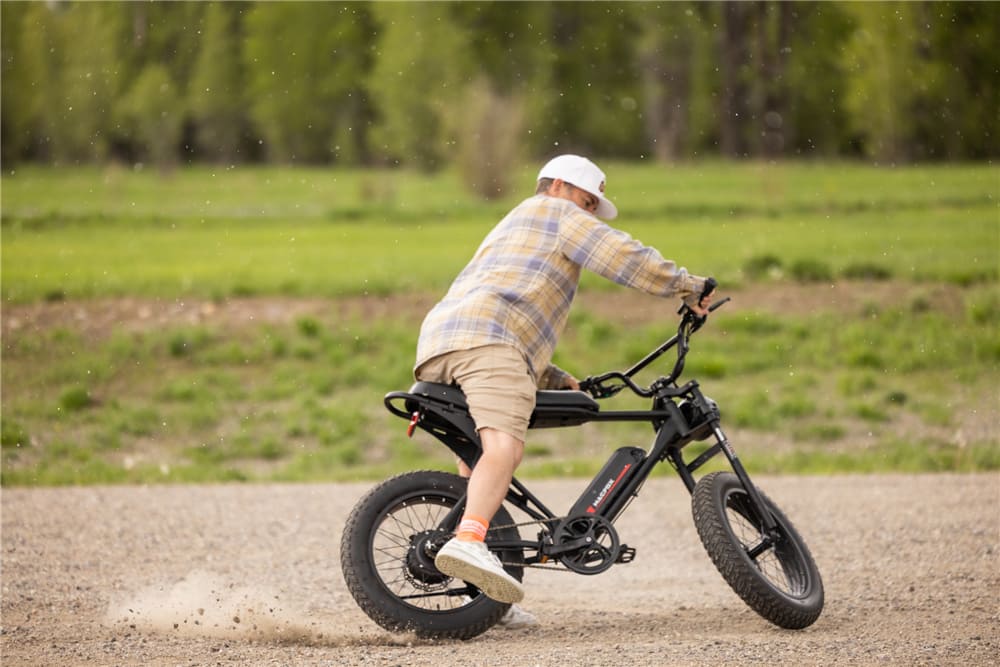E-bikes have become a well-liked alternative means of transportation as a result of the development of modern technology and the growing emphasis on sustainable living. The debate over whether e-bikes should be considered vehicles has grown critical as they meld effortlessly into urban life.
Contents []
- 1.E-Bikes' Environmental Effects
- 2.Getting to Know the E-Bike Phenomenon
- 3.E-Bikes' Current Classification
- 4.The Vehicle Status Argument
- 5.E-bikes' Economic Benefits
- 6.The Defence of Vehicle Status
- 7.Scales in Balance
- 8.An International View
- 9.Social Implications of E-Biking
- 10.Conclusion
- 11.FAQs
- 12.We recommend for you
E-Bikes' Environmental Effects
Vehicles have a significant negative impact on the environment. E-bikes offer a considerably greener option thanks to their powerful electric motors. According to a research by the Transport Research Laboratory, e-bikes typically emit between 2.6 and 5 grams of CO2 per kilometre, which is far less than that of cars or even public transportation. In addition to aiding in the fight against global warming, this smaller carbon footprint also ensures that the air in urban areas is cleaner.

Getting to Know the E-Bike Phenomenon
Electric bikes, often known as e-bikes, are essentially bicycles with an electric motor to help the rider. Their increasing popularity is a result of the seamless integration of conventional riding and the bonus of electrical assistance. This makes it possible for riders to go farther distances while using less energy and offers a greener option to conventional cars.
E-Bikes' Current Classification
E-bike regulations are now largely ambiguous in many regions. They aren't strictly speaking bicycles, nor are they considered to be motor vehicles. The repercussions of this unclear categorisation for licensing, insurance, and traffic laws are significant.
The Vehicle Status Argument
- Safety Regulations and Standards: If e-bikes were given vehicle status, it would mean that they have to adhere to specific safety standards. This could lead to enhanced features like improved braking systems, better lighting, and robust manufacturing practices, ensuring a safer ride for all.
- Infrastructure Development: Recognizing e-bikes as vehicles might prompt city planners to design roads and infrastructure catering specifically to them. Dedicated lanes, charging stations, and parking areas can be developed, making cities more e-bike friendly.
- Clear Legal Framework: With vehicle status, e-bikes would have a defined set of rules governing their usage. This would help in avoiding conflicts with other road users and establish clarity for legal disputes.
Related Reading: Electric Bike Comparison: 6 Things You Need to Know
E-bikes' Economic Benefits
E-bike users might possibly save a lot of money over time. Running costs are greatly decreased when no gasoline is required. E-bike maintenance costs are frequently less than those for vehicles or motorcycles, even with their electrical components. Even after accounting for potential license, insurance, and parking costs, e-bikes are frequently the most affordable option.
The Defence of Vehicle Status
- Potential Licensing and Fees: Classifying e-bikes as vehicles might mean that riders would need a special license to operate them. This could deter potential users who view e-bikes as an uncomplicated mode of transport.
- Insurance Implications: Vehicle status could also imply mandatory insurance. The added cost and administrative processes might reduce the appeal of e-bikes for many users.
- May Deter Traditional Bikers: Cyclists who transitioned to e-bikes for the added advantage might revert to traditional biking or opt for other means if there are too many regulations.
Scales in Balance
E-bikes have undoubtedly revolutionized urban transportation. Although it is obvious that e-bikes should be treated as vehicles, there may also be negative consequences. A balanced strategy that values e-bikes for who they are might be the best course of action. A new categorization that recognizes the hybrid nature of e-bikes as an alternative to a general one might be the answer.
-
 Macfox X1From $999.00Conquer Any Terrain with Macfox-X1
Macfox X1From $999.00Conquer Any Terrain with Macfox-X1Top Speed | 25mph
Range | 38-76+miles
Charge Time | 5-6 hrs
Battery | 500W/H (48V 10.4ah)
Motor | 500w nominal / 750w peakThrottle | Twist Throttle
Gearing & Rear Derailleur | Single Speed
Vehicle Weight | 65 lbs
Length x Width x Height | 71" x 27 "x 42"
Rider Weight Limit | 325 lbs
An International View
Different nations have taken a variety of positions on this matter. E-bikes are often categorized in European countries according to their motor power and speed restrictions. Asian nations, in contrast, are more liberal, and e-bikes are frequently treated the same as bicycles there. The USA follows a state-by-state system, with each state setting its own e-bike laws. Understanding these various methods might help you come up with the best strategy.
Social Implications of E-Biking
Local governments all over the world are supporting the e-bike movement. E-biking communities and groups are growing, encouraging social rides and fostering a sense of community. The popularity of e-bikes has also led to an increase in festivals, workshops, and events focused on this kind of transportation, transforming it into more than just a source of transportation.

Conclusion
E-bikes are not merely a passing fad; they represent a sign of the future of urban personal transportation. While the argument over whether or not they should be considered cars is legitimate, it's crucial to avoid losing sight of the fact that e-bikes offer a clean, effective form of transportation.
FAQs
Q1: What environmental advantages do e-bikes have over conventional motor vehicles?
Studies show that e-bikes emit only 2.6 to 5 grams of CO2 on average per kilometre, much less than cars or other forms of mobility. As a result, e-bikes have a smaller carbon footprint, making them a more environmentally friendly option and improving the air quality in urban areas.
Q2: Are there any financial benefits to riding an e-bike?
E-bikes do indeed have a number of financial advantages. Since they don't need gasoline, operating costs are greatly decreased. E-bike maintenance costs are often lower than those for vehicles or motorcycles as well. Even after accounting for prospective license, insurance, and parking costs, e-bikes are generally found to be a more affordable mode of transportation.
Q3: How do e-bikes affect neighbourhood and social interactions?
All throughout the world, e-bikes are strengthening the sense of community. Many e-bike organizations are sprouting up, encouraging group rides and strengthening interpersonal relationships. E-biking has become more than just a form of transportation as a result of the popularity of e-bikes and the rise of related events, workshops, and festivals.


















